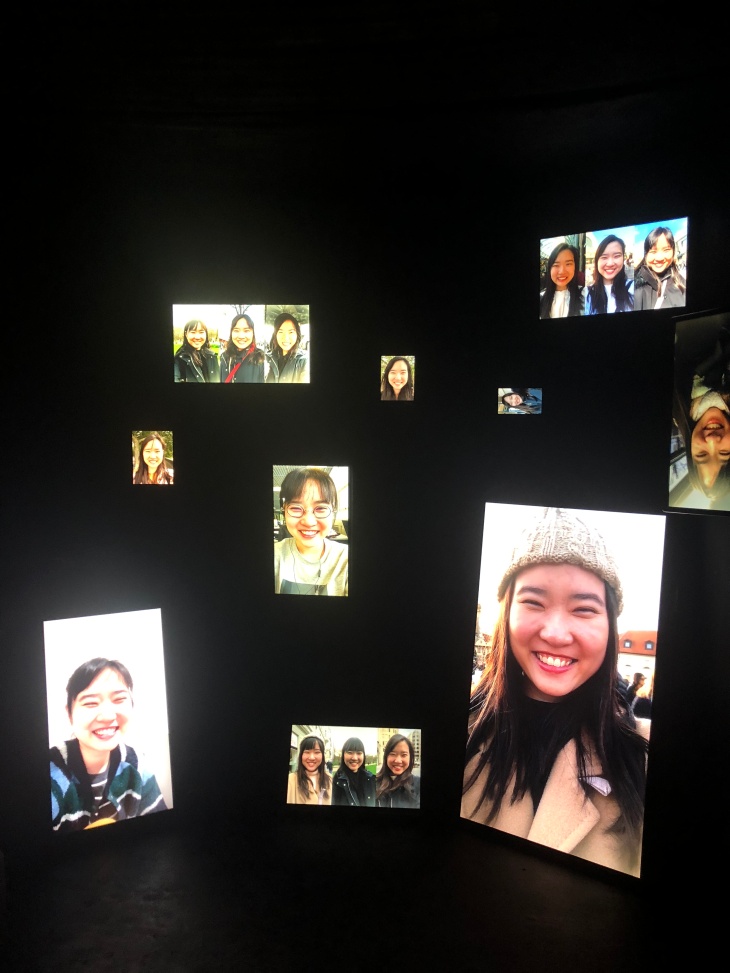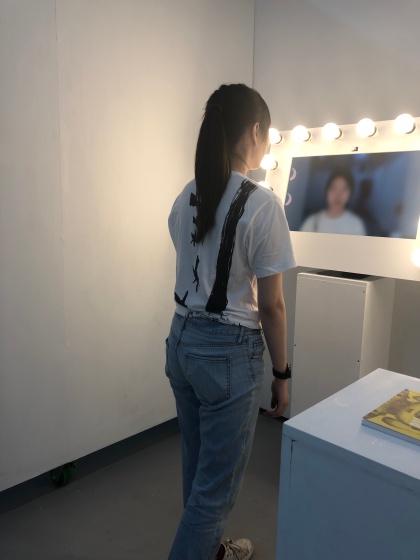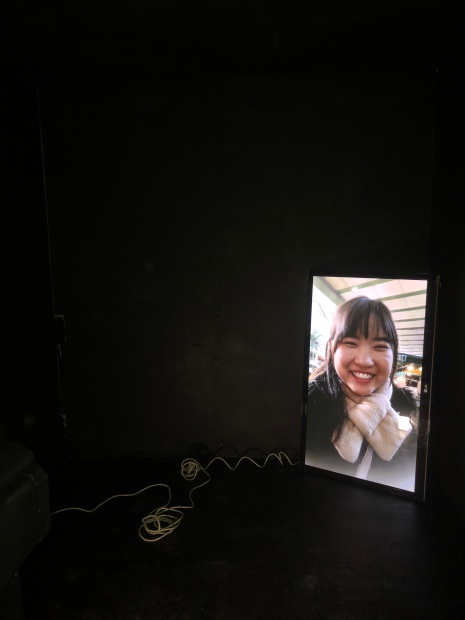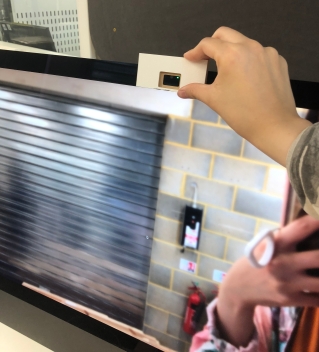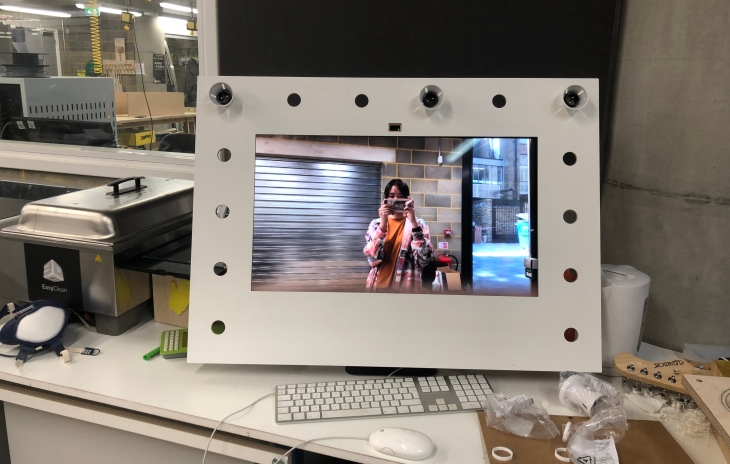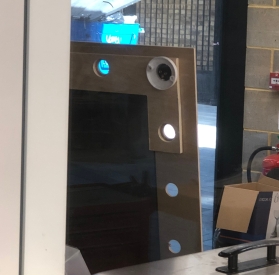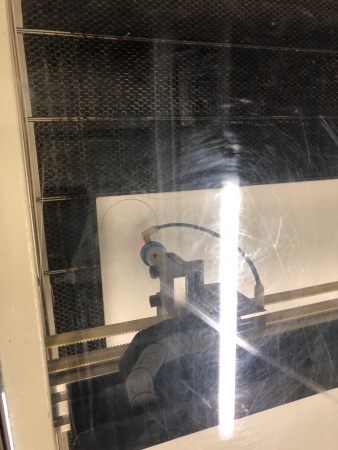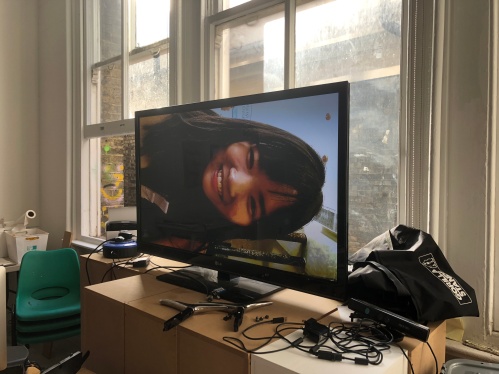Working Title:
Looking through emotions
Aims and Objectives:
Emotions as the medium to reflect our reality
What triggered me to do this project is the unique feeling that everyone has. Although it is hard to explain what it actually is and how we feel in concrete, emotion, as a human nature, breaks the barriers among people who have different background or culture. On the other hand, emotion implies our desires. One of the most significant examples is happiness. Happiness is one of the universal values that most of us want to possess. However, it is almost impossible to be happy all the time in reality. We face and handle our emotion in different ways and sometimes we might disguise our feelings under certain circumstances. Emotion also reflects the current social phenomena or even our humanity which is worth reflecting and exploring.
Objectives
- Exploring humanity and desire
- Reflecting social phenomena we have nowadays
- Confronting our inner-selves
Context
Definition of emotion
Emotion closes to us but it is also an abstract concept and there is no single meaning in emotion. In different aspects, emotion also has different definition of emotion.
Oxford dictionary
“Emotion” is related to the verbal and nonverbal behaviours during communication. It means the feelings deriving from the person’s mood, situations, or relationships when interacting with the others.
Psychology
In psychology, emotion is a big field of study and there are different belief in the meaning of emotion and they are summarised as the following:
- Our feelings
- Process occurs in human brain
the subjective experience of human experience. They are the perceptions of behavioural expressions which react to stimuli mediated through the lower brain. (Damasio, 2003)
Philosophy
Not only psychology, but philosophy also have different opinion on what is emotion:
– An internal feeling the remarkable raw feel of an experience (Saul, 1980)
- Cognition, particular perception, judgement of value or evaluation (Hjort & Laver, 1997)
History in Art and Emotion
In the book What is Art? (1904, p.156), Tolstoy Leo states that there is an inseparable relationship between art and emotion which may help us to figure out more mysteries about emotion. He suggests that art is the means of communication which make feelings become accessible to human. It renders accessible emotion experienced by their ancestor to the latest generations, just like speech communicates ideas and knowledge.
Expressionism
Their relationship can be found in art history as well. The term, expressionism refers to art in which the image of reality is distorted in order to make it expressive of the artist’s inner feelings or ideas”. (Tate, 2017) It emphasises on expressing innermost part of human emotion in order to oppose the increasingly industrialised and isolating modern condition. The art movement in the 20th century revealed the importance of emotion in art by exploring the psyche of human and humanity. (White, 2018) It can also be applied in different forms of art such as painting, sculpture or music .etc. the term expressionist can be applied to artworks from any era, it is generally applied to the art of the twentieth century. One of the most typical examples is the Scream (1893) by Edvard Munch. It reveals the war between ourselves and society. Even till now, the Scream evokes the audience’s anxiety and fear by its highly intense colour, distorted background and free brushstroke.
Power of a smile
In the book, “Smile Revolution” by Colin Jones mentioned the history of smile has been started since the prehuman ape. Smiling and laughing are deeply ingrained forms of human communication predated the acquisition of language. Besides, Smile is one of the easiest expression for human to recognize. Colin also proposed smile as socialization and lubricate social interaction. Because smile can influence others and make other people smile too. It is not only subjective and individual, but also collective and social. It shows the power of a smile.
- Case Study: Artworks related to emotions
Bill Viola: the Passions (2003-)
Bill Viola is an American video and sound installation artist. He often emotional in a classical sense, recalling medieval or renaissance painting.
Exploring human emotions are the subject of his exhibition, “The Passions” which is an ongoing series begun in 2000. A feature of the portraits and tableaux of the series is soundless and the incorporation of time, which relocates the subjects to a location and dimension outside our own. He tries to explore the power & range of human emotions and how the extremes of emotion, in which the ability to reflect is lost actually, can be represented. He also investigates one of the oldest problems in art: how to convey the power and complexity of emotion by depicting the faces and bodies of models.
“Silent Mountain” (2001) is one of the video work from this series. It is a muted video showing a man screamed hardly. Although sound removed from the video, it does not affect us to understand and imagine how loud he shouts or even how he feel.
“The Quintet of the Astonished” (2000) is another work from “The Passions” and the also the series of “Quintet” (The Quintet of the Unseen, The Quintet of the Astonished, The Quintet of Remembrance and The Quintet of the Silent).
The composition of five individuals with a high contrast lighting and dark background likes painting in the past such as Caravaggio. They do not move or leave from their original positions. They experience the rising emotional energy independently without interfering the others. By slow-motion effect, the video makes each expression visible in details. It also creates a subjective, psychological space where time is suspended for performer and audience alike.
The physicality of emotion in art
Yi Fei Chan: Tear Gun – When emotion becomes a real object
Tear Gun (2016) created by the Taiwanese designer, Yi Fei Chen visualises her feeling in an innovative way. The user first needs to put on a special mask which is made by an inverted triangular shape silicon cup in order to collect the dropping tears. The collected tears will then be frozen, stored inside the gun, ready for loading and shoot. Instead of being a deadly weapon for people, Tear Gun is a “visual metaphor” for Chen to toughen up and to speak her personal struggles.
There are many reasons behinds our tears and sometimes it is hard to explain. However, art speaks for us when language cannot help express our feelings. It helps the artist understands more about herself, her affections and how to manage her emotions. As Chen believes that machines are appliances that transform the power of human purposes. If emotion can be considered as a certain type of “energy”, machines can also be used for creating new possibilities. (2017) The emotion does not just reside in the work but become energy and the physical object itself. Tears including inhibited emotion such as anger and sadness are transformed into a bullet.
Apart from the actual function of the tear gun, it is a creative work which is full of emotions. Audiences can experience her struggles concretely and therefore, their emotion is even aroused because of the physicalization of emotion. Chen makes a good example of how to make emotion become tangible. It also raises our creativity to imagine how the physicality of other emotions will look like and our reflection on our emotional response.
Methodology
They told me to be happy
“They told me to be happy” are the 3 video combinations with the duration of 23:33 recording the process of keep smiling in different places. Smile is always used to connect happiness and it is one of the social skills in our daily lives. However, it is one of the easiest emotions to be disguised. In daily lives, we always smile under different circumstances. What is the reason for us to hold the smile? Does it have something similar to our daily lives? Have you ever smile in some situation even you actually do not want to?
Smiling Buddha
Smiling Buddha is an imaginary story about how fanatic people are when happiness becomes a religion. It shows how ridiculous can be when people facing their desires – the attitude everyone wants to be as happiest as they can. However, some of them may forget they won’t be happy since the moment they want to happy. Because happiness isn’t from the outside, it’s from the bottom of our hearts.
Lost
As we all know, mirrors reflect a clear image. But the interactive work, “Lost” does the opposite – when people get closer to the mirror, the more blurry they can see themselves. The word, mirror is also used to describe self-reflection. But what can I do if I can’t see myself clearly?
Unlike other works, “Lost” is not related to the concept of “happiness”, it expressed my inner feelings. I always try to use the perspective of an outsider to see myself and the things happening around me as I think it is the way to see things clearly. I thought I was able to pull out my personal emotions and always keep calm and rational. Although I will put myself in somebody shoes to understand something, I never do it to myself. Until the moment I was lost, I finally realised I was inside the mist and I could not find my way. The mirror, “Lost” expresses how I felt and the moment I confronted myself & also my emotions. I understand more about myself by looking through my emotions.
6. Work Plan
|
Date
|
Schedule
|
|
September 2017
|
- Project direction
- Exhibition visit
|
|
October
|
- Research on emotion and different types of artwork related to emotion
- Read the book – “The way of Seeing”
- Exhibition visit
- Think of idea
|
|
29 Oct – 4 Nov
|
- Research on chemicals affecting human sentiment
- Research on emotion and different types of artwork related to emotion
- Read the article – “Emotion and Art”
- Exhibition visit
- Think of idea
|
|
5 Nov – 11 Nov
|
- Read the book – “The way of Seeing”
- Develop “Happiness Gas?”
- Experiment on the street
|
|
12 Nov – 18 Nov
|
|
|
19 Nov – 25 Nov
|
- Prepare for the exhibition: Hybrid
|
|
26 Nov – 2 Dec
|
- Prepare for the exhibition: Hybrid
- Exhibit “Happiness Gas?” on Hybrid
|
|
11 Dec- 16 Dec
|
- Reflect the exhibition
- Read books and article
|
|
17 Dec – 23 Dec
|
- Reflect on project direction
- Read books and article
- Research different works
|
|
7 Jan 2018 – 13 Jan 2018
|
- Research about happiness and tear
- Update proposal
- Prepare for the exhibition: Gaze
|
|
14 Jan – 20 Jan
|
- Develop paid tear
- Research
- Tutorial
- Develop work “Is She Easy?” for the Gaze
|
|
21 Jan – 27 Jan
|
- Reflect project direction
- Invite women for the “Is She Easy?”
- Make a program for “Is She Easy?”
|
|
28 Jan – 3 Feb
|
- Filming women response for “Is She Easy?”
- Edit video
- Make a program for “Is She Easy?”
|
|
4 Feb – 10 Feb
|
- Set up
- Exhibit “Is She Easy?” on the exhibition, Gaze in LCC
|
|
Feb
|
|
|
March
|
- Mid-point Review
- Doing “What Makes Them Happy?”
|
|
Apr
|
- Research for research paper & Topic
- Reading Book
|
|
May
|
- Research for research paper
- Reading Book
- Brainstorming
|
|
June
|
- Develop Face
- Tutorial
- Research
- Reading books
|
|
July – Aug
|
- Interim Show
- Research paper
|
|
Sep
|
|
|
Oct
|
- Research paper
- Unit 1 Assessment
|
|
1 Nov – 14 Nov
|
- Unit 1 Assessment
- Update Proposal
|
|
15 Nov – 22 Nov
|
- Visit exhibitions
- tutorial
|
|
Nov – Dec
|
- 3-week challenge – Happy Cycle
- prepare for the pop-up show
|
|
Jan – Feb 2019
|
- Programming “Lost”
- Writing the story, “Smiling Buddha”
- Low Residency
- Tutorial
|
|
March
|
- Experiment the program for “Lost”
- “They told me to be happy” – smiling videos shooting
|
|
Early April
|
- “They told me to be happy” – smiling videos shooting
- Research
|
|
Late April
|
- Drawing illustration for “Smiling Buddha”
- Editing “They told me to be happy”
- Research
|
|
May
|
- “They told me to be happy” – smiling videos shooting
- Drawing illustration for “Smiling Buddha”
- Tutorial
- Symposium 2
|
|
June
|
- Making “Smiling Buddha” as the book
- Print the book
- Final editing “They told me to be happy”
- Modified the code for “Lost” to make faster processing for the blurred image
- Prepare for the final show
- Building the mirror frame for “Lost”
- Final show set-up
|
|
July
|
- Final show
- Unit 2 Assessment
|
7. Bibliography:
Hjort, M., & Laver, S. (2014). Emotion and the arts. New York: Oxford University Press.
Berger, J. (2008). Ways of seeing. London: British Broadcasting Corporation and Penguin Books.
Barwell, I. (1986). How does Art Express Emotion?. America: Blackwell Publishing on behalf of The American Society for Aesthetics http://rc
[Accessed 12 Nov. 2018].Bill Viola: The Passions (Getty Exhibitions). (n.d.). , https://www.getty.edu/art/exhibitions/viola/
Chen, Y.-F. (2016) How To Art: Yi-Fei Chen. Available at: https://creators.vice.com/nl/ article/vvp8xb/how-to-art-yi-fei-chen (Accessed: 09 August 2018).
Chen, Y.F (2018) Yi Fei Chen. Available at: http://chenyifeidesign.com/ (Accessed: 09 August 2018).
Damasio, A. (2003) Looking for Spinoza: Joy, Sorrow, and the Feeling Brain. New York: Harcourt Publishing.
Eliasson, O. (2011). ‘Our Emotional Future: Olafur Eliasson’. Interview with Olafur Elissson. Interviewed by Eckhard Schneider for Pinchuk Art Centre
Hjort, M., Laver, S. (Eds.), 1997. Emotion and the Arts. New York: Oxford University Press. James, W. (1918) The Principles of Psychology. New York: Henry Holt and Company, p. 442.
Kripke, S. (1980) Naming and Necessity. Cambridge: Harvard University Press.
White, K. (2018) 7 Things You Need to Know: Expressionism. Sotheby’s. Available at: https://www.sothebys.com/en/articles/7-things-you-need-to-know-
expressionism (Accessed: 05 June 2018).
Jones, C. (2014). Smile revolution: in eighteenth-century Paris.
